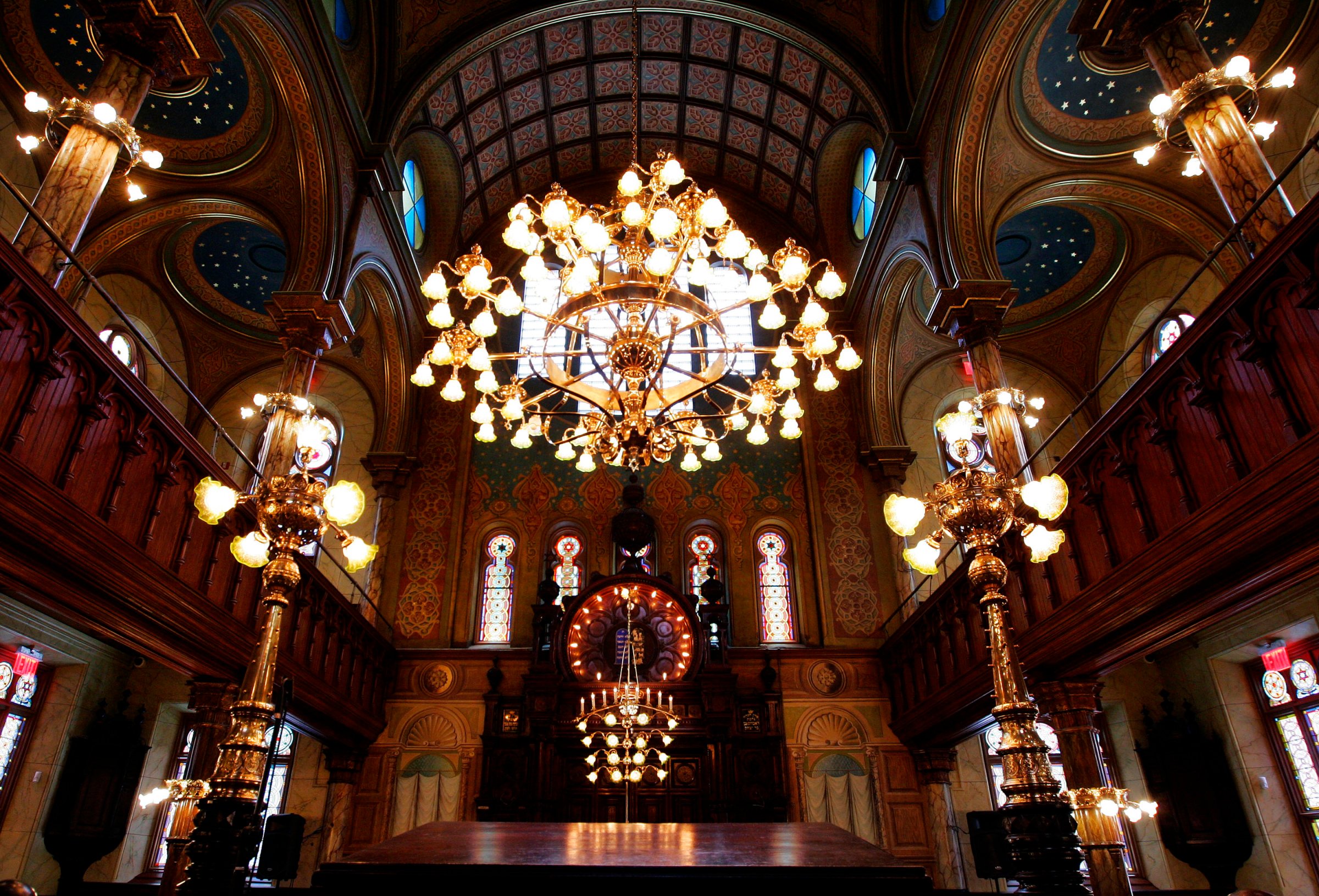
Those attending synagogue services on the eve of Yom Kippur are used to hearing a cantor recite the Kol Nidre prayer, one of the most important musical moments in the Jewish religious year. But among American Jews of the early 20th century, the cantor’s role on Yom Kippur was even bigger.
A “cantorial craze” in the 1880s and 1890s and through the early part of the 20th century coincided with a huge wave of immigration between 1881 and 1924, during which 2.5 million eastern European Jews arrived in the United States to escape persecution and the lack of economic prospects under the Russian empire. Though many temples today employ a cantor year-round, at the time it was common for them to be hired specifically for major holidays. And, in that environment, cantors could become bona fide celebrities.
“It was the eastern European Jews who assigned cantors this star role, living in desperate circumstances as they did, seeing [the cantors] as a voice that would carry their prayers to God and give them a kind of emotional release that nothing else could provide,” says Mark Slobin, a professor emeritus at Wesleyan University and ethnomusicologist who specializes in the music of eastern European Jews.
In New York City alone, the Jewish population jumped from 80,000 in 1880 to 1.75 million by 1925, making it the largest metropolitan Jewish population in history. As that population became more established, the cantor could become a symbol of that upward mobility. Majestic temples like the Eldridge Street Synagogue were built to accommodate the growing population, and the big spaces required big voices. They served a more practical purpose, too. “Income from the sale of tickets for the High Holy Day Services was an important factor in congregational financing, and it depended in part on the quality and fame of the officiating cantor,” the late Jewish Theological Seminary historian Abraham Karp once wrote after studying the inner workings of one synagogue during that time period.
Get your history fix in one place: sign up for the weekly TIME History newsletter
For example, a cantor named Yossele Rosenblatt reached pop-idol levels of adulation within the Jewish community, inspired tales of the “melodious wail” he had as a baby, and was touted in ads as “The Man with the $50,000 Beard.” While he was praised for turning down a lucrative offer to join the Chicago Opera, he did appear in one of the first talkies: The Jazz Singer (1927), starring Al Jolson, which brought the craze to the national spotlight with a story about a man who, against his Orthodox Jewish father’s wishes, wants to become a jazz singer instead of a cantor. Another cantor, Gershon Sirota, was considered by some experts to be the first recording star among the community of singers; his first New York City appearance drew a packed crowd at Carnegie Hall. Rosenblatt and Sirota were to “cantorial music what [Enrico] Caruso and [Luciano] Pavarotti are to opera,” says Slobin.
But most synagogues couldn’t afford these stars. So, to hire the best singer possible, they held auditions months in advance, according to Slobin’s Chosen Voices, a history of cantors in America. (The younger the better “to please the ladies.”) Once word spread to Russia and Poland that a New York congregation hired a cantor for $1,000 in 1885—about $26,000 in 2015—a “cantorial migration” began. Even more money could be made outside of New York, where the options were fewer. Training was done by apprenticeship, and “boys with beautiful voices might even be kidnapped to get them into choir,” Slobin says. “In eastern Europe, there was a lot of poverty, and around 1900, a boy could just hit the road.”
The world of the celebrity cantor began to fade away, says Slobin, after the 1930s. Many of the families who had come to the United States around the turn of the century began to assimilate—no longer placing such significance on the grandeur of their temples—and new immigration was cut off as European Jews lost the option to easily leave their war-torn homes. As a result, some congregations shrank, and temples lost some of their grandeur. One Sept. 1, 1930, TIME article describes a trend of pop-up “mushroom” synagogues where Jews who did not belong to any congregation hired rabbis to lead their High Holy Day services.
That’s one tradition that has continued, as nomadic congregations certainly still exist, drawing those who wish to hear from a cantor—celebrity or not��on the most important days of the religious year. “There’s a pull come the holidays, when it’s too late to join a synagogue because seats are already sold,” says Jenna Weissman Joselit, a professor of Judaic Studies and History at the George Washington University. “Traditional religion doesn’t speak all year long, but come this time of year, there’s a longing for home.”
More Must-Reads From TIME
- The 100 Most Influential People of 2024
- The Revolution of Yulia Navalnaya
- 6 Compliments That Land Every Time
- What's the Deal With the Bitcoin Halving?
- If You're Dating Right Now , You're Brave: Column
- The AI That Could Heal a Divided Internet
- Fallout Is a Brilliant Model for the Future of Video Game Adaptations
- Want Weekly Recs on What to Watch, Read, and More? Sign Up for Worth Your Time
Write to Olivia B. Waxman at olivia.waxman@time.com